Select Language
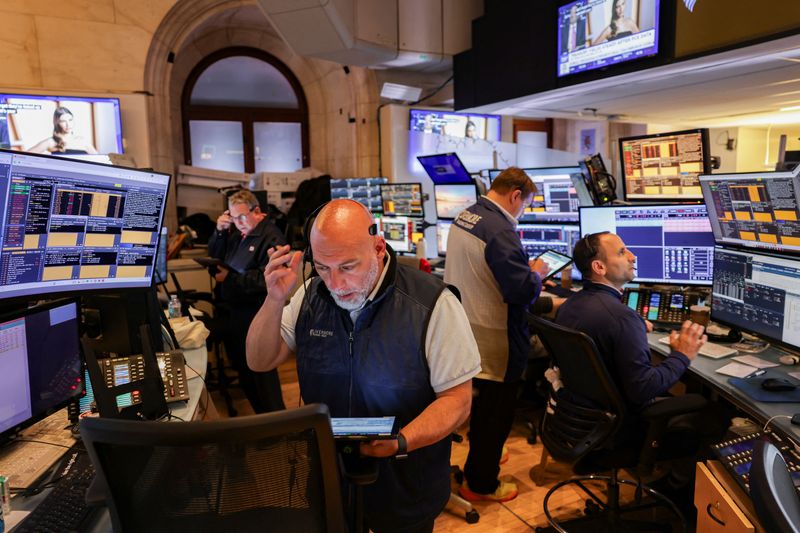
1. Futures higher
U.S. stock futures pointed higher on Thursday as investors geared up for the release of key consumer price data that could impact the trajectory of Federal Reserve interest rate policy.
By 03:10 ET (07:10 GMT), the Dow futures contract had risen by 35 points, or 0.1%, S&P 500 futures had climbed by 8 points, or 0.1%, and Nasdaq 100 futures had ticked up by 39 points, or 0.2%.
The main averages on Wall Street ended in mixed fashion on Wednesday, with traders gauging a blowout earnings report from artificial intelligence-enhanced cloud software group Oracle and an unexpected fall in producer prices in August which bolstered bets for an imminent Fed rate cut.
Both the benchmark S&P 500 and tech-heavy Nasdaq Composite indices closed at all-time peaks, powered in large part by a surge in Oracle’s shares. The stock spiked by 36% -- its largest one-day gain since 1992 and giving it a market capitalization not far from the $1 trillion mark. The blue-chip Dow Jones Industrial Average, meanwhile, dropped by 0.48%.
2. CPI ahead
Attention is turning to the consumer price index for August, a crucial gauge of inflationary pressures.
The data from the Labor Department’s Bureau of Labor Statistics is anticipated to show that prices grew at an annualized rate of 2.9% in August, accelerating slightly from 2.7% in July.
At that level, the Fed would likely be facing simultaneous threats to both sides of its dual mandate -- maximizing employment and maintaining price stability, defined as a long-run inflation rate of 2%.
This would leave policymakers with the knotty task of simultaneously addressing a cooling labor market and sticky prices, an economic situation that could threaten to edge into a period of "stagflation" marked by high inflation, tepid growth and elevated unemployment.
However, a separate report on Wednesday showed a surprise decline in U.S. factory-gate prices in August. Analysts highlighted that prices in tariff-exposed categories in particular were relatively muted.
So far, Fed officials, including Chair Jerome Powell, have indicated that they are likely to prioritize the labor market’s easing over inflation. A rate cut could in theory spur more investment and hiring, albeit at the risk of fueling price growth.
3. ECB decision
Prior to the Fed’s decision at its September 16-17 gathering, the European Central Bank is scheduled to unveil its own rate announcement on Thursday.
The ECB is widely anticipated to leave borrowing costs unchanged. However, analysts at ING noted that the debate between supporters of keeping rates steady and those in favor of a cut "will likely be more heated than markets have priced in."
Perceived hawkish commentary from ECB President Christine Lagarde in July has weighed on expectations for impending rate moves, with the central bank eyeing slightly higher-than-anticipated inflationary pressures since its last gathering and faster-than-expected economic growth.
These developments, along with ongoing uncertainty over U.S. tariffs, have fueled bets that the ECB will provide little clear guidance around its own policy trajectory -- and will back keeping its key deposit rate unaltered at 2% for a second straight meeting.
4. Adobe to report
Headlining the earnings calendar will be software tools provider Adobe, who will report its quarterly returns after the closing bell.
Sentiment around the firm behind the Photoshop image editor and Acrobat Pro file manager is negative, with many investors flagging that Adobe faces "significant cyclical and secular headwinds," analysts at Vital Knowledge said in a note.
The company is seen posting fiscal third-quarter earnings per share of $5.18 on sales of $5.91 billion, Bloomberg consensus estimates showed.
In June, San Jose-based Adobe raised its annual financial guidance, but observers fretted over when the business could begin to see results from its adoption of AI.
5. Oil inches down
Oil prices slipped lower on weak demand in the United States, after logging strong gains this week on heightened geopolitical tensions in Russia and the Middle East.
At 03:36 ET, Brent futures dropped 0.1% to $67.40 a barrel, and U.S. West Texas Intermediate crude futures fell 0.2% to $63.56 a barrel.
U.S. crude inventories rose by 3.9 million barrels in the week to September 5, the Energy Information Administration said late Wednesday, against expectations of a draw of 1 million barrels.
Gasoline stocks also rose, adding 1.5 million barrels, against expectations of a draw of 200,000 barrels.
Evidence of a slowing U.S. economy will raise concerns that demand in the largest energy consumer in the world is set to slow as the year progresses.
Elsewhere, gold prices edged down amid investor caution prior to the U.S. consumer price report, but the yellow metal stayed close to record highs on firm expectations that the Fed will cut interest rates next week.
Bullion is particularly sensitive to borrowing costs, as lower rates reduce the opportunity cost of holding the non-yielding asset.

The Federal Reserve is set to embark on a steady easing cycle, delivering five rate cuts through mid-2026, according to Wells Fargo analysts.
In a note on Wednesday, the bank projected that the Fed “cut the federal funds rate by 25 bps at each of its next three meetings, pushing the target range down to 3.50%-3.75% by year-end.” Two further quarter-point cuts are expected at the March and June meetings next year, which would bring the terminal rate to 3.00%-3.25%.
The softer outlook is driven largely by a weakening labor market. “The U.S. labor market is in a precarious position, in our view, and this is the primary driver of our more dovish monetary policy outlook,” Wells Fargo wrote.
The analysts pointed to a “measly 29K” three-month average in nonfarm payroll growth in August and a fresh cycle-high unemployment rate of 4.3%.
Inflation, however, remains a constraint. The note highlighted that “the core PCE deflator is up 2.9% year-over-year” and that prices for physical goods are keeping inflation “stubbornly above the central bank’s 2% target.”
Still, Wells Fargo stressed that inflation expectations “generally have been well-behaved of late.”
The bank warned that recession risks have “ticked higher,” assigning a 35% probability of a U.S. downturn in the next 12 months.
But beyond 2025, Wells Fargo struck a more optimistic tone, forecasting “an above-consensus 2.4% Q4/Q4 growth rate for real GDP next year” as fiscal stimulus and the lagged effects of rate cuts filter through.

The Amsterdam-based firm, which supplies Nvidia (NASDAQ:NVDA) graphics processors for artificial intelligence training, said it will provide computing resources to Microsoft from a New Jersey data center.
Nebius rebranded from Yandex NV last year after Yandex’s Russian-language operations were sold to a group of local investors.
Microsoft has been turning to outside providers to ease a shortage of AI-ready cloud infrastructure. OpenAI, one of Microsoft’s largest Azure customers, has been seeking additional computing capacity, recently striking a deal with Google.
The Windows maker has also tapped CoreWeave Inc (NASDAQ:CRWV), which separately signed a multibillion-dollar supply agreement with OpenAI.
CoreWeave’s stock gained about 6% in the premarket trade.
Earlier this year, Reuters reported that CoreWeave has secured a role in Google’s new partnership with OpenAI.
The cloud provider, which builds services on Nvidia GPUs, will supply capacity to Google Cloud, which in turn will resell it to OpenAI to support products like ChatGPT, the report said. Google will also contribute some of its own resources directly to OpenAI.
Nebius said it may pursue new financing to accelerate expansion beyond its original plans. In a filing with the SEC, the company disclosed that GPU services will be rolled out in stages this year and next.
The contract is valued at $17.4 billion through 2031, with Microsoft retaining the option to purchase an additional $2 billion of services.
Before Tuesday’s premarket surge, Nebius shares had already more than doubled in 2025, ending the Monday session with a market value just above $15 billion.
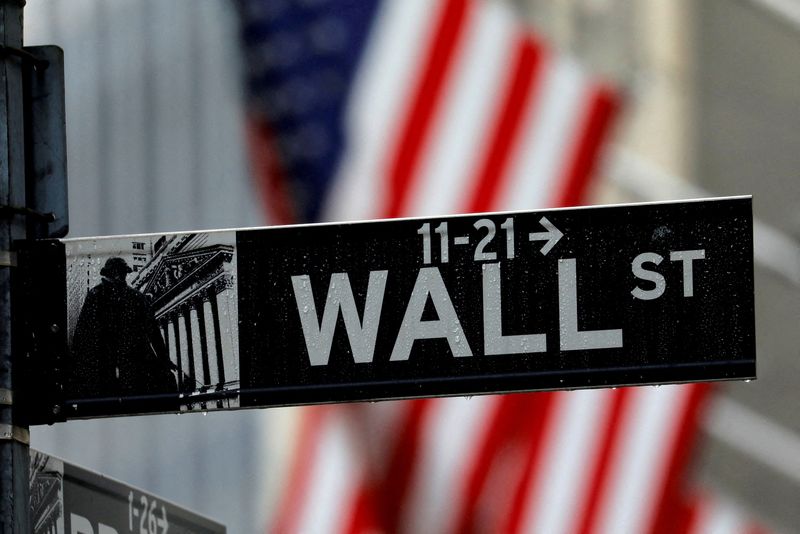
August CPI awaited for more cues
The focus this week is squarely on consumer price index inflation data for August, due on Thursday.
The print is expected to reflect some of the inflationary effects of Trump’s tariffs, given that a bulk of them took effect last month. Trump’s tariffs are expected to be borne by U.S. importers– a trend that could underpin local inflation.
Due out on Thursday, the data from the Labor Department’s Bureau of Labor Statistics is anticipated to show that prices grew at a rate of 2.9% in August, accelerating slightly from 2.7% in July.
Producer price index inflation data is also due this week.
While the inflation data is unlikely to factor into the Fed’s September rate decision, it is likely to affect the Fed’s stance towards future easing. The central bank has repeatedly warned that inflationary risks from Trump’s tariffs could delay future rate cuts.
French, Japanese politics in spotlight
Taking an international view, the French government is set to hold a confidence vote on Prime Minister Francois Bayrou’s fiscal plan later in the session
Should a collection of opposition parties vote against the government, as is broadly anticipated, Bayrou would be forced to submit his resignation to French President Emmanuel Macron, adding more uncertainty to a government struggling to pass ambitious deficit reduction targets.
This follows the Sunday’s news that Japan’s Prime Minister Shigeru Ishiba will step down as the leader of the Liberal Democratic Party, just weeks after its ruling coalition suffered a crushing defeat in the upper house elections.
Ishiba signaled that his resignation was also after Tokyo had secured a trade deal with the U.S., which will entail relatively lower tariffs on Japanese goods.
But his abrupt resignation now opens the door to a potential leadership struggle in the world’s fourth-largest economy, especially after the LDP lost its majority in the upper house.
Crude gains after OPEC+ meeting
Oil prices surged higher after the OPEC+ production group agreed to raise output at a substantially smaller pace than that seen earlier this year.
At 05:45 ET, Brent futures gained 2% to $66.79 a barrel, and U.S. West Texas Intermediate crude futures rose 2% to $63.13 a barrel.
The Organization of Petroleum Exporting Countries and allies, known as OPEC+, agreed on Sunday to raise production by a cumulative 137,000 barrels per day in October, much lower than monthly hikes of about 555,000 bpd and 411,000 bpd in earlier months.
The cartel’s latest hike comes after it began steadily raising production earlier this year, as leader Saudi Arabia sought to regain market share to offset deteriorating oil prices.
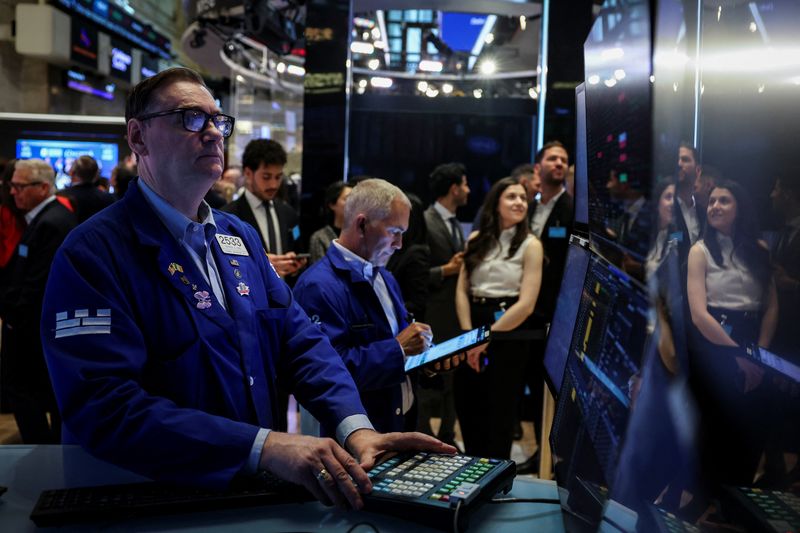
1. Futures tick mostly higher
U.S. stock futures pointed slightly higher on Friday, as investors geared up for the release of a hotly-anticipated monthly jobs report.
By 03:40 ET (07:40 GMT), the Dow futures contract was mostly unchanged, S&P 500 futures had gained 10 points, or 0.2%, and Nasdaq 100 futures had increased by 87 points, or 0.4%.
The main averages on Wall Street advanced in the prior session, with the benchmark S&P 500 in particular notching a fresh record closing high. Underpinning sentiment was labor market data that further bolstered wagers that the Federal Reserve will slash interest rates at its upcoming policy meeting this month.
Figures showed that private-sector hiring slowed last month, while new claims for unemployment benefits edged up by more than anticipated -- both fresh indications of possible cooling in the American jobs picture.
2. NFPs ahead
The numbers served as precursor to the main event on the economic calendar this week: the publication of the August nonfarm payrolls report.
Economists expect the U.S. to have added 75,000 roles during the month, up slightly from 73,000 in July.
Analysts have suggested that a soft or even tepid reading could all but cement expectations of a Fed rate reduction at the central bank’s September 16-17 gathering. According to CME’s FedWatch Tool, markets are pricing in a nearly 100% chance of a 25-basis point drawdown in borrowing costs from the Fed’s current target range of 4.25% to 4.5%.
Fed officials are facing pressures to both pillars of their mandate -- keeping price growth stable and promoting maximum employment -- although recent comments from policymakers have indicated that supporting the labor market may be their current priority. Cutting interest rates can help to spur spending by businesses and consumers, albeit at the risk of pushing up lingering inflation.
Adding to the debate around Friday’s report will be the fallout from the prior print, which was both unexpectedly weak and featured deep downward revisions to the June and May totals. The numbers drew the ire of President Donald Trump, who dismissed the head of the agency collating the data, saying -- without evidence -- that the report had been tampered with to hurt him politically. He later nominated a loyalist as a replacement.
3. OpenAI to produce its own AI chip with Broadcom - FT
OpenAI is preparing to begin manufacturing its own artificial intelligence chip from 2026 in partnership with Broadcom, the Financial Times reported on Thursday, citing people
The move comes as OpenAI seeks to address rapidly increasing computing power requirements for its AI programs, while also reducing its reliance on Nvidia.
Broadcom CEO Hock Tan on Thursday said the company had a new, undisclosed customer committing to $10 billion in orders, with the FT report stating that this was OpenAI.
The ChatGPT maker plans to use the new chip internally, rather than supplying them to external customers, the FT report said. OpenAI had last year begun a collaboration with Broadcom over an AI chip, but the timeline for mass production had been unclear.
The FT report comes just hours after Broadcom clocked strong quarterly earnings and presented an upbeat outlook for the current quarter. Broadcom’s shares rose by more than 6% in extended hours trading.
4. Trump preparing to restart North American trade deal renegotiation - WSJ
Trump’s administration is preparing to begin renegotiating the U.S.-Mexico-Canada free trade deal, the Wall Street Journal reported on Thursday evening.
The Office of the U.S. Trade Representatives will begin public hearings on renegotiating the deal, and faces an October 4. Deadline to do so. The agency could issue a request for comment from companies and unions by as soon as this week, the WSJ reported, citing people familiar with the administration’s thinking.
But the consultations will only be the first official act in what is likely seen as a months-long process in renegotiating the deal, which Trump had signed in 2020. The USMCA deal had replaced the 1992 North American Free Trade Agreement, and was one of the key trade achievements of Trump’s first term.
However, the president has somewhat undermined the agreement by imposing and scaling back steep trade tariffs against Canada and Mexico this year.
5. Gold muted
Gold prices were subdued in early European trading, as U.S. rate cut bets kept the yellow metal close to recent peaks and investors awaited the upcoming nonfarm payrolls data.
Bullion, along with broader metal prices, was set for weekly gains, fueled partially by the dollar losing ground amid rising conviction in a September borrowing cost reduction.
Lower rates tend to benefit non-yielding assets such as metals by lowering the opportunity cost of investing in the segment over government debt.
Spot gold rose 0.1% to $3,547.80 an ounce, while gold futures for December were mostly unchanged at $3,607.82/oz by 03:32 ET. Spot prices hit a record high of $3,578.80/oz earlier this week.

Gold could surge toward $5,000 an ounce if investor confidence in U.S. institutions weakens and undermines the Federal Reserve’s credibility, Goldman Sachs said, reinforcing its call that the metal remains the firm’s “highest-conviction long recommendation”.
The bank’s baseline forecast sees gold climbing to $3,700 by the end of 2025 and $4,000 by mid-2026, supported by ongoing central bank purchases.
It said its base case implies only “modest positive returns” for broad commodity indices over the next year, making gold an outlier in its bullish stance.
But Goldman analyst Samantha Dart cautions that tail risks are rising.
“A scenario where Fed independence is damaged would likely lead to higher inflation, higher long-end rates, lower stock prices and an erosion of the Dollar’s reserve currency status,” Dart wrote in a note.
In such an environment, they said, private investors could follow central banks in diversifying into gold, sending prices well above the bank’s $4,000 mid-2026 baseline.
Dart estimates if just 1% of the privately owned U.S. Treasury market shifted into gold, the metal’s price could reach nearly $5,000 an ounce.
That compares with the bank’s existing tail-risk scenario of $4,500, which already assumes a jump in central bank demand to 110 tonnes per month, ETF holdings rebounding to pandemic-era levels, and positioning at the top of historical ranges.
Beyond Fed credibility, Goldman highlighted growing risks from commodity supply concentration in geopolitical hotspots such as the Middle East, Russia, the U.S. and China.
Export restrictions and disruptions to key trading routes, alongside moderating OPEC+ spare capacity, have increased the potential for price spikes across raw materials.
The analyst pointed to Russia’s curtailment of gas exports to Europe in 2021 and China’s recent restrictions on rare earths as examples of commodities being used as leverage.
“While high OPEC+ oil supply spare capacity through early 2025 would have likely capped oil price upside in a more significant disruption scenario, OPEC+ spare capacity is now moderating, leaving oil markets more vulnerable to upward price spikes under a supply disruption shock,” the note states.
Structural trends are also tightening commodity markets, particularly in gold and copper, where supply is unresponsive or slow to adjust.
Goldman cited three long-term drivers: de-risking energy through power grid investment, rising defense spending, and dollar diversification.
Central banks, especially in Asia, have been major buyers of gold since 2022, a trend that followed the freezing of Russian dollar assets. That buying spree, Goldman noted, has been the primary driver of a 94% rally in gold prices since 2022.
While Goldman’s base case implies only modest positive returns across broad commodity indices over the next year, it underscored that “commodities as a hedge against inflation (and other tail) risks is increasingly relevant in the current environment.”
Against that backdrop, the bank sees gold not only as a defensive asset but also as the clearest beneficiary of any erosion in U.S. institutional credibility.
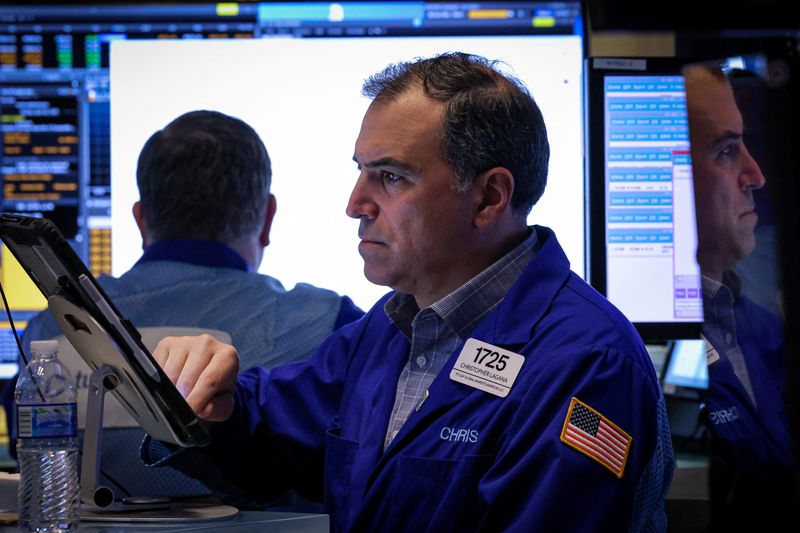
1. Futures mixed
U.S. stock futures were hovering around both sides of the flatline on Wednesday after equities on Wall Street sank in the prior session to begin a holiday-shortened trading week.
By 02:58 ET (06:58 GMT), the Dow futures contract had slipped by 122 points, or 0.3%, S&P 500 futures had edged up by 10 points, or 0.2%, and Nasdaq 100 futures had climbed by 78 points, or 0.3%.
The main averages fell on Tuesday, as investors returned following the Labor Day holiday to a sell-off in longer-dated government debt and fresh uncertainty lingering over the trajectory of sweeping U.S. tariffs.
Partially denting sentiment was a ruling late last week from a U.S. appeals court that most of President Donald Trump’s import levies were illegal. The decision, which the Trump administration has vowed to appeal to the Supreme Court, cast doubt over the White House’s ability to use the duties as a tool in international economic policy -- and comes as a court is likely to weigh in on a separate effort by Trump to dismiss Federal Reserve Governor Lisa Cook.
While the indices finished off their lowest levels of the day, the Cboe Volatility Index -- a crucial fear measure -- ticked higher.
In individual stocks, Kraft Heinz (NASDAQ:KHC) declined by 7% after the food packaging group said it would split into two separate entities. PepsiCo (NASDAQ:PEP), on the other hand, rose 1.1% following the disclosure of a $4 billion stake in the beverage firm by activist investor Elliott Management.
The blue-chip Dow Jones Industrial Average shed 0.6%, the benchmark S&P 500 dipped by 0.7%, and the tech-heavy Nasdaq Composite fell by 0.8%. It was a relatively downbeat opening to September, a month traditionally viewed as one of the worst for U.S. stocks.
2. Alphabet shares climb after antitrust case ruling
Alphabet (NASDAQ:GOOGL) shares rose over 5% in extended hours trading after a federal judge ruled that Google will not be required to sell its popular Chrome web browser as part of remedies in the Justice Department’s landmark antitrust case.
Judge Amit Mehta’s decision allows Google to avoid one of the most severe potential penalties following the court’s earlier finding that the company maintained an illegal monopoly in the search market. While Google will be barred from entering into exclusive contracts for internet search, the ruling spares the tech giant from divesting key assets.
The decision also determined that Google will not have to sell off its Android operating system, representing another significant victory for the company.
Additionally, the judge ruled that Google will not be required to cease payments to Apple (NASDAQ:AAPL) and other companies for preloading Google products. Shares in the iPhone maker also advanced in after-hours dealmaking.
The judgment, which will last for six years, does require Google to share certain information with competitors as a remedy for its online search monopoly. This less severe outcome than what government prosecutors had sought appears to have relieved investors.
3. Beige Book ahead
The Federal Reserve is due to publish its latest "Beige Book" on Wednesday, offering one of the last snapshots of the economy before the central bank’s September policy meeting.
It will be the first such report since July, when contacts across several industries warned that they anticipate cost pressures will "remain elevated in the coming months."
This would increase the "likelihood that consumer prices will start to rise more rapidly by late summer," the report noted, adding that all of the Fed’s 12 districts have flagged the impact of Trump’s trade policy.
The Beige Book, which aims to bring together surveys and observations from commercial and community contacts at each of the Fed’s regional banks, also showed that many were worried about a possible slowdown in business. At the same time, uncertainty around the trajectory of the tariffs has led some companies to postpone major hiring and layoff decisions, the report said.
More clarity on the state of the American labor market is due out this week, including a survey of job openings later on Wednesday. This, along with private payrolls and weekly jobless claims, will serve as precursors to the all-important August employment report on Friday.
4. Salesforce among firms to report
On the earnings front, software firm Salesforce is expected to unveil its latest returns after the close of U.S. stock markets.
The results come as worries are growing that cracks may be emerging in a longstanding artificial intelligence boom that has underpinned stocks during a time of elevated valuations and broader economic uncertainty, according to analysts at Vital Knowledge.
"[S]entiment has been cautious amid concerns about AI displacement risk, although the narrative has started to shift in the favor of enterprise software in the last couple of weeks thanks to some solid earnings reports from the industry," the analysts wrote in a note.
Low-cost retailer Dollar Tree is also among the names set to report later today, with investors on the lookout for updates on its turnaround strategy. Peers like Dollar General, Target, and Walmart have recently posted "decent sales" as well, the Vital Knowledge analysts said. Hewlett Packard, Campbell’s, and Macy’s are also due to announce quarterly figures.
5. Gold briefly hits record high
Gold prices steadied, hitting an all-time peak as persistent concerns over global fiscal health and U.S. trade tariffs kept traders biased towards safe haven assets.
Spot gold was down slightly at $3,530.23 an ounce, while gold futures for December were up 0.1% to $3,596.30/oz by 03:25 ET. Spot gold briefly hit a record high of $3,547.09/oz earlier in the session.
But bullion’s gains were held back by a recovery in the dollar, which recouped a bulk of its losses this week as a selldown in government bonds across the globe pushed traders into U.S. markets.
The yellow metal, along with its precious and industrial peers, was still sitting on strong gains so far this week.
Among industrial metals, London copper futures temporarily rose above $10,000 a ton for the first time since March, amid increasing optimism that demand in top importer China will improve.

U.S. tariff uncertainty, rate cut bets boost gold
Gold’s latest round of gains was spurred by heightened uncertainty over Trump’s tariffs, after an appeals court ruled last week that they were illegal. While the court said Trump’s tariffs could remain in place until mid-October, the president criticized the decision and said he would challenge the ruling in the Supreme Court.
The development sparked increased uncertainty over the economic impact of Trump’s tariffs, a bulk of which took effect in August. Any ruling against the tariffs will also force Washington to negotiate recent deals with major trading partners.
Persistent bets on a September rate cut also boosted gold, even as data released last week showed inflation remaining sticky.
Markets were seen pricing in a nearly 85% chance for a 25 basis point cut by the Federal Reserve in September, CME Fedwatch showed.
This came even as personal consumption expenditures price index data for July showed inflation remaining sticky and pulling further above the Fed’s 2% annual target. The central bank views the PCE indicator as a key gauge of price pressures.
Fed Chair Jerome Powell had signaled earlier in August that the Fed was considering a 25-basis point reduction in September, but had still not committed to the move amid concerns over sticky inflation.
Still, the prospect of decreased rates pulled the dollar to a five-week low and supported metal prices. Non-yielding assets such as metals tend to benefit from lower rates, given that they make commodities appear more attractive over investing in government debt.
Among broader metal prices, spot silver rose 0.1% to $40.7545/oz, having earlier rallied past the $40 level for the first time since late-2011.
Spot platinum rose 0.7% to $1,421.55/oz and was just in sight of a recent 11-year high.
Silver and platinum have outpaced gold in recent months, as relatively discounted prices per ounce, coupled with some consolidation in gold, sparked a speculative frenzy into both metals.
In industrial metals, copper prices remained upbeat as somewhat underwhelming purchasing managers index data from top importer China drummed up expectations for more stimulus measures from Beijing.
Benchmark copper futures on the London Metal Exchange rose 0.3% to $9,919.0 a ton, while COMEX copper futures rose 0.4% to $4.5905 a pound.
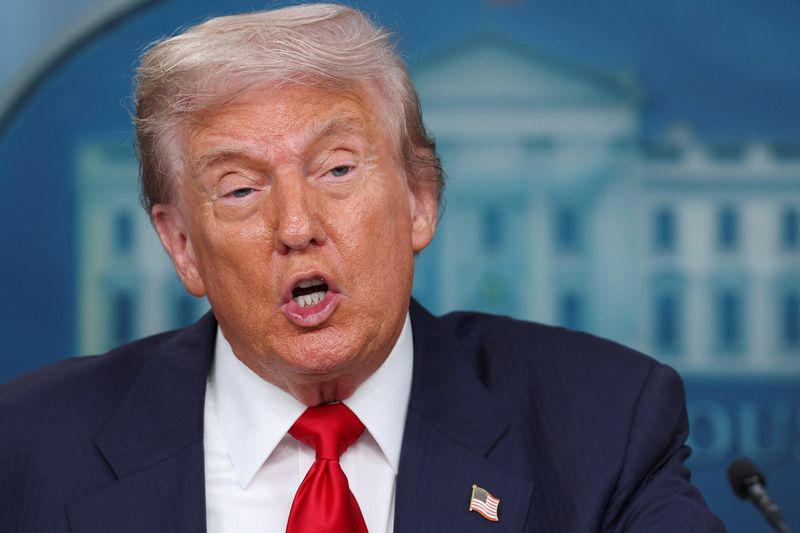
1. Legal fight over Trump tariffs
The Trump administration’s tariffs have faced a range of legal challenges, particularly from those who have argued against the president’s use of emergency executive branch powers to put the import taxes in place.
Investors were gauging a crucial ruling from the U.S. Court of Appeals for the Federal Circuit issued late on Friday which rejected U.S. President Donald Trump’s sweeping tariffs. The White House now has until mid-October to appeal to the Supreme Court, or else the ruling comes into effect.
Media reports have suggested that Trump officials have long anticipated that the high court would eventually need to settle the matter, adding that the administration is confident that the tariffs -- and Trump’s push to assert his authority to enact them -- will eventually be supported by the court’s conservative majority.
"Global trading partners will no doubt find it premature to be celebrating just yet, but we’ll be interested in seeing whether the Treasury market comes under any further pressure if the US has to hand back already received tariff revenues," analysts at ING said in a note.
2. Jobs data looms large
Headlining the economic calendar this week will be release of the latest labor market report on Friday, which could provide insight into the health of the wider economy and serve as one of the final tests of investor confidence that a Fed will slash rates at its September meeting.
An unexpectedly soft U.S. payrolls report last month bolstered bets that the Fed would cut borrowing costs, even as policymakers remain wary of lingering inflationary pressures.
Fed Chair Jerome Powell later suggested at a closely-monitored speech at an economic symposium in Wyoming that risks to the job market were increasing. As of Monday morning, there was a more than 87% probability that the Fed will reduce rates by 25 basis points from its current range of 4.25% to 4.5% at the end of its two-day gathering on Sept. 16-17, according to CME’s FedWatch Tool.
Economists are estimating that nonfarm payrolls will come in at 74,000 in August, not far from the mark of 73,000 in July. The previous data set was itself a cause of controversy, with deep downward revisions sparking Trump’s ire and leading to the ouster of the commissioner of the Bureau of Labor Statistics, which compiles the monthly jobs figures.
3. U.S. ISM figures
Along with separate gauges of private-sector employment and job openings, the weekly agenda will also feature readings of business activity that could shed some light on the effect of Trump’s tariff policy.
The Institute for Supply Management’s manufacturing purchasing managers’ index for August is tipped to stand at 48.9, ticking up from 48.0 in the prior month. ISM’s services sector PMI metric, meanwhile, is seen at 50.5, compared to 50.1 previously.
In both cases, a mark below 50 denotes contraction and above that level indicates expansion.
U.S. manufacturing -- which makes up a little over 10% of the American economy -- contracted for a fifth straight month in July, while employment at factories slumped to a five-year low.
Services, accounting for more than two-thirds of the economy, mostly flatlined during the month. The segment has also endured a period of weakening employment.
4. Beige Book ahead
Elsewhere, the Fed is due to publish its latest "Beige Book" on Wednesday, offering one of the last snapshots of the economy before the central bank’s September policy meeting.
It will be first such report since July, when contacts across several industries warned that they anticipate cost pressures will "remain elevated in the coming months."
This would increase the "likelihood that consumer prices will start to rise more rapidly by late summer," the report noted, adding that all of the Fed’s 12 districts have flagged that effect of Trump’s trade policy.
The Beige Book, which aims to bring together surveys and observations from commercial and community contacts at each of the Fed’s regional banks, also showed that many were worried about a possible slowdown in business. At the same time, uncertainty around the trajectory of the tariffs has led some companies to postpone major hiring and layoff decisions, the report said.
5. Broadcom to report
Highlighting the earnings docket this week will be returns from semiconductor group Broadcom.
The quarterly report may offer a fresh glimpse into an outlook for artificial intelligence spending that has soured in the wake of underwhelming results from several firms heavily exposed to the nascent technology.
Last week, Nvidia, considered one of the focal points of the AI boom, further contributed to these worries after it unveiled a lukewarm current-quarter sales forecast. While still comparatively outsized in absolute dollar terms, the outlook -- weighed down by the exclusion of potential China sales -- disappointed investors who have come expect blowout figures from the AI bellwether.
"While investors are pulling back from AI, they seem to be returning to software, an industry many fear could suffer displacement/disruption risk from AI," analysts at Vital Knowledge said in a note, adding that results from Salesforce on Wednesday will be "a big test for the group."

Gold prices fell slightly on Friday, but were sitting on strong gains in August amid increasing bets on a September interest rate cut by the Federal Reserve.
Focus was now squarely on upcoming PCE price index data, the Fed’s preferred inflation gauge, for more cues on interest rates.
The dollar retreated in anticipation of the PCE data, and was also set for August losses amid growing bets on a September rate cut. This trend benefited gold and broader metal prices.
Spot gold fell 0.2% to $3,409.89 an ounce, while gold futures for October fell 0.1% to $3,469.92/oz by 01:48 (05:48 GMT).
Gold set for August gains as rate cut bets grow
Spot gold was trading up 3.7% in August, and was now less than $100 away from its April record high.
Gains in the yellow metal were fueled chiefly by increased bets on a September rate cut by the Fed, especially as data pointed to a cooling in the U.S. labor market.
Fed Chair Jerome Powell acknowledged that the labor market was cooling and flagged the possibility of a 25 basis point cut in September. But Powell still remained largely non-committal towards future easing, citing inflationary risks from U.S. President Donald Trump’s trade tariffs.
Still, markets ramped up bets on a September cut, with CME Fedwatch indicating an 82.9% chance the Fed will cut rates by 25 bps next month.
This notion weighed on the dollar and benefited broader metal prices, most of which were set for monthly gains. The dollar index was trading down nearly 2% for August.
Platinum and silver were trading up 5% and 5.9%, respectively, for the month. The two outpaced gold as investors bought into relatively discounted prices for the two metals.
Benchmark copper futures on the London Metal Exchange rose 0.6% to $9,889.50 a ton on Friday, while COMEX copper futures rose 0.6% to $4.5730 a pound. Both contracts were trading up between 2.7% and 4.5% for August.
PCE inflation awaited for more rate cues
Market focus was now squarely on upcoming PCE price index data, due later on Friday, for more cues on the U.S. economy and interest rates.
The print– especially core PCE data– is the Fed’s preferred inflation gauge, and is likely to factor into the central bank’s plans for rate cuts.
While headline PCE inflation is expected to remain largely steady, core PCE inflation is expected to have increased slightly in July, while also remaining well above the Fed’s 2% annual target.
Any signs of sticky inflation are likely to cast doubts over the Fed’s rate cut plans, especially given that the Fed has cited inflation as its biggest consideration for rates.
August’s inflation data is expected to provide more insight into the inflationary impact of Trump’s tariffs, given that a bulk of the levies took effect during this month.

